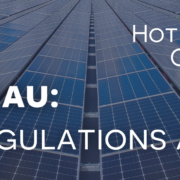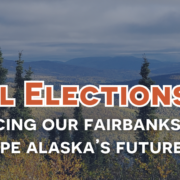Be Informed + Learn About the Judges on Your Ballot
Hey all! Something a little different this week—our friends at Alaskans for Fair Courts are guest-authoring our blog to share important information about judicial retention elections. With election season in full swing, we wanted to give you the chance to hear from the experts on this crucial part of the ballot. Check it out below!
Greetings from Alaskans for Fair Courts! We feel honored to have this opportunity to chat with you because we know how dedicated and involved each of you are in various community-oriented efforts in our great state!
I want to talk about judicial retention. Why? If you want to protect your values and your Constitutional rights, it is in your best interests to fill out the entire ballot as an informed voter. Here’s why.
Nineteen judges “standing for retention” are on the ballots this year – fifteen of whom will be on the ballot in the Third Judicial District, home to 2/3 of the state’s population, which includes Anchorage.
Why does this matter to you? Alaska’s state judges are the bulwark against attacks on the Alaska Constitution and/or the rule of law. They handle 95% of all cases, affecting a myriad of issues that affect all Alaskans, sometimes involving core constitutional rights that you value.
What is judicial retention? Unlike many other states, Alaska’s judges do not run campaigns to become a judge. Alaska’s Constitutional framers kept money and partisan politics out of judicial selection and retention. Wise folks!
Toward this end Alaska’s Constitution creates an independent, nonpartisan commission – the Alaska Judicial Council – to evaluate judicial applicants and seek the “best available timber.” The Council is comprised of: three non-attorney members appointed by the governor and confirmed by the legislature; three attorneys appointed by the Alaska Bar Association after polling its members; and the Chief Justice, who serves as an ex officio member who chairs the Council but votes only in those rare instances where there is a tie vote. The framers also concluded that judges should serve limited terms rather than lifetime appointments, requiring judges to “stand for retention” every so many years. Retention offers you an important role – to make the final decision about whether a judge should remain on the court.
This superior retention system – which is widely admired across the country – has produced judges who are dedicated to protecting the law while serving the community with integrity, professionalism, knowledge of the law, and respect for those who are in their courtrooms. We are lucky to have some of the best judges in the country.
Here’s why you can be so confident in our state judges. When a judge comes up for retention, the Judicial Council conducts a rigorous investigation of that judge, gathering information from thousands of people who have interacted with the judge, including jurors, court clerks, law enforcement, attorneys and social workers. The public has an opportunity to testify at public hearings. The Council compiles this information, grades the judges against judicial performance standards that reflect “best practice,” and votes whether to recommend the judge be retained. The Council’s findings, research, scores and recommendations are all on the Alaska Judicial Council website.
Unfortunately, since 2000, the “yes” votes in the 3rd Judicial District have declined by 7% – a downward trajectory that has now dipped below 60% for the first time in the State’s history. If a judge does not receive 50% of the votes during retention that judge loses their position on the court.
A number of factors have contributed to this trend:
- Voters not understanding how judges are selected and why they appear on the ballot
- Voters not finishing the ballot because they don’t know where to find information about the judges
- Eroding confidence in the judiciary exacerbated by national hyper-partisanship trends
- Individuals/organizations wanting to remove a judge because of an unpopular opinion or because a judge did not rule in their favor
- Efforts by individuals and groups within Alaska, and others from Outside, trying to destabilize our courts and replace our judges with ideologues
- Funding coming in from Outside extremist groups seeking to politicize Alaska’s state courts
If you don’t know the judges on your ballot, or don’t have the time to learn more about them, the Alaska Judicial Council has evaluated each judge rigorously and done the work for you! Check out their recommendations here!
For 64 years Alaskans have benefited from judges who were selected and retained by this process. Alaskans would not be well-served by a system that removes even one judge because of an unpopular decision, ideological differences, or because someone lost a case.
Please – When You Vote, Finish Your Entire Ballot!
Donna Goldsmith, Co-Chair Alaskans for Fair Courts
Check out the Find My Judges page at: https://akfaircourts.com










